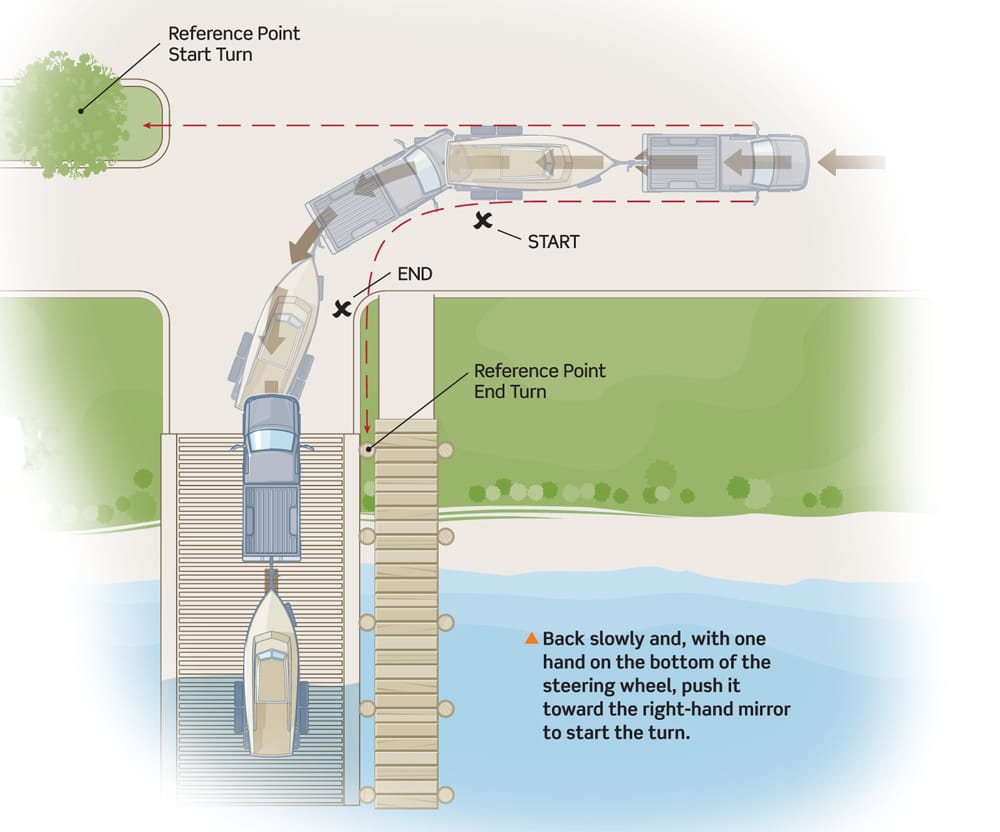
No-swivel Trailering
Having to twist around every time you back your boat down a launch ramp can become a real pain in the neck, and with larger boats, the view over the seat doesn’t take in the entire picture. The solution is to learn to use the mirrors as your primary reference when backing. Practice these simple tips in a parking lot or on a day when the ramp isn’t crowded, and before long, you’ll be backing up like a pro.
Bearings
Fix Your mirrors show small bits of the landscape — in reverse. It’s a lot easier to understand what you’re seeing in the mirrors if you first have a good mental image of the staging area and launch ramp. After prepping the boat for launch, take a few moments to walk the ramp area, visualizing your path to the water, and make note of a few landmarks that can serve as reference points on your path.
Hands Down
One simple trick many drivers use to back up with just their mirrors is to place a hand on the bottom of the steering wheel. Watching your boat in the rearview mirror, move your hand in the direction you want the boat and trailer to go. Move your hand to the right, and the boat goes right in your mirror. It’s that simple. When backing in a straight line, the goal is to keep the boat trailer evenly spaced in both mirrors. If it starts to move more into one mirror, push in the opposite direction with the hand to move the trailer back in line.
Straight and Easy
If possible, align your rig for a straight shot backward onto the ramp. Then, before putting the gear in reverse, take a moment to look in one or both mirrors and identify fixed reference points. This will help keep you on the straight and narrow once you begin backing. Make small corrections early to keep the trailer centered in the mirrors. It’s OK to pause and turn your head every so often to assess the situation, and it’s better to take it slow and easy than to rush, get really fouled up and then have to pull forward to reposition.
Turning Point
On ramps with shorter lead-ins, you may have to back around a turn to reach the water. The key to a smooth turn is in the setup. Ideally, you’ll want to make a smooth, mediumradius turn that leaves the tow vehicle and trailer aligned and facing the ramp a bit before the trailer hits the water. For the average trailer, this can be done by starting the turn about two rig lengths from the top of the ramp. Visualize a fixed pivot point for the turn, and identify an object that lines up with the end of the turn.
A Second Set of Eyes
Backing is a lot easier when you don’t have to go solo. But make sure your observer is helping, not just adding confusion. First, determine that you can see each other; if the observer can see your face in the mirror, the observer knows you can see hand signals. Agree on a simple set of hand signals: “Left” and “right” could be a pointing hand, “keep coming” could be an inward wave, and “stop” might be a closed fist.









